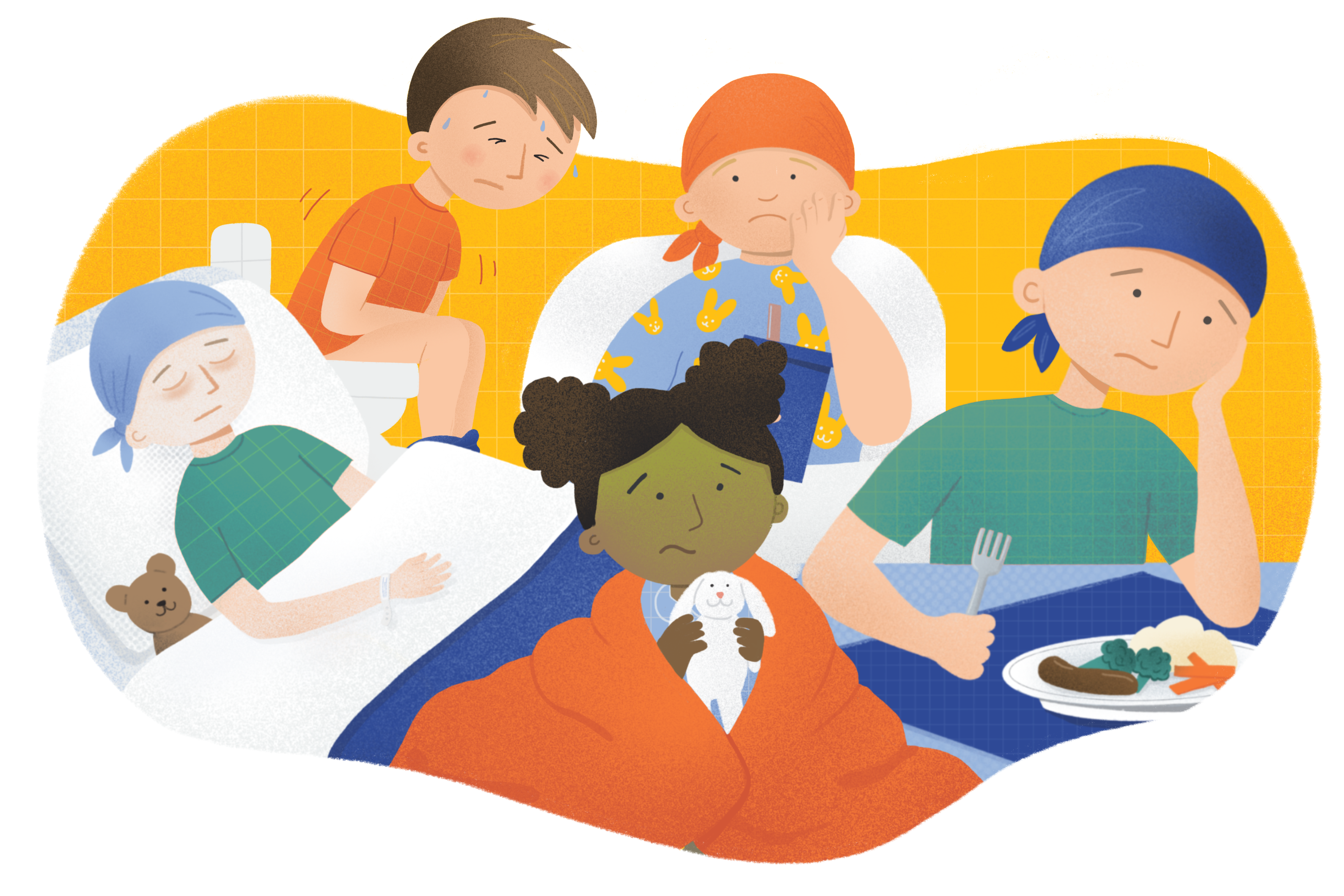Chemotherapy for children’s cancers

Chemotherapy uses anti-cancer drugs to kills cancer cells. Your child may have one drug or several, depending on their protocol (treatment plan).
How is chemotherapy given?
Chemotherapy is given in different ways, depending on the cancer type and the drugs being used. It may be given by:
- A drip (intravenous infusion) into the bloodstream through a central line, e.g. Hickman line – drugs are diluted in a large bag of liquid and go in slowly over several hours
- An injection into the bloodstream (usually through a central line, e.g. Hickman line). The drugs are injected into the line by a nurse. It usually last a few minutes
- By mouth, in liquid or tablet form (oral chemotherapy). Often your child can take the drugs at home. Drugs given by mouth are just as effective as drugs given into a vein.
Other, less common ways of giving chemotherapy:
- By injection into the fluid around the spine and brain (intrathecal chemotherapy)
- By injection into a muscle (intramuscular chemotherapy)
- Under the skin (subcutaneous chemotherapy)
Treatment cycles
Chemotherapy is often given in cycles, with a rest period in between. The rest period allows your child’s blood cells to recover from the effects of the chemotherapy.
If your child’s blood count hasn’t recovered when their next chemo is due, your doctor may increase the rest period.
Most often children feel more unwell shortly after chemo and feel better towards the end of the rest period, just before the next treatment cycle is due. It’s best to plan any activities for the times in the cycle when your child feels best.
Understanding your child’s drug treatment
Your consultant or clinical nurse specialist will give you specific information about
- The drug(s) your child will have
- How the medicine works
- How it is given
- The most common side‐effects and how to manage them
- When your child is due to have their next treatment
If you have any unanswered questions, you should ask your doctor or nurse. You can also call our cancer nurses on 1800 200 700. Ask to talk to our Children’s Cancer Nurse.
Will my child get side-effects?
Everyone reacts differently to chemotherapy. Some children experience very few side‐effects, others may experience more. The type of side-effects from chemotherapy mainly depend on the drugs used and the amount of chemotherapy your child has.
As chemotherapy drugs travel throughout the body they damage healthy cells as well as the cancer cells. This is why side-effects happen. Fortunately, healthy cells recover quickly, so side‐effects are usually temporary. Usually any side-effects are worse just after chemo and improve towards the end of the rest period, just before the next chemotherapy treatment is due.
Some side-effects can last for a long time or even be permanent. It is also possible for side-effects to develop some time after treatment. These are called late side-effects.
The main side‐effects of chemotherapy include:
For more information
Phone
1800 200 700




